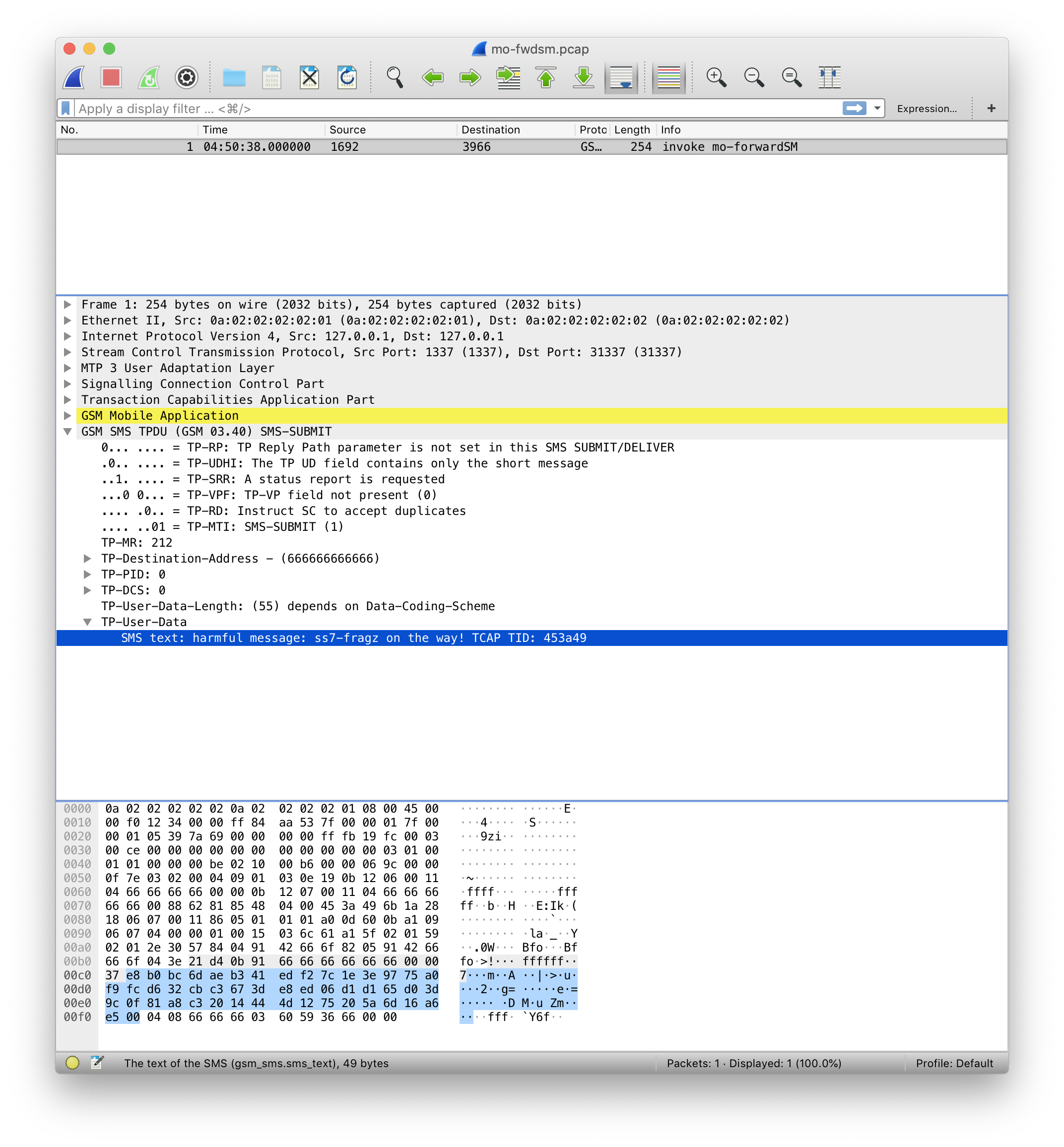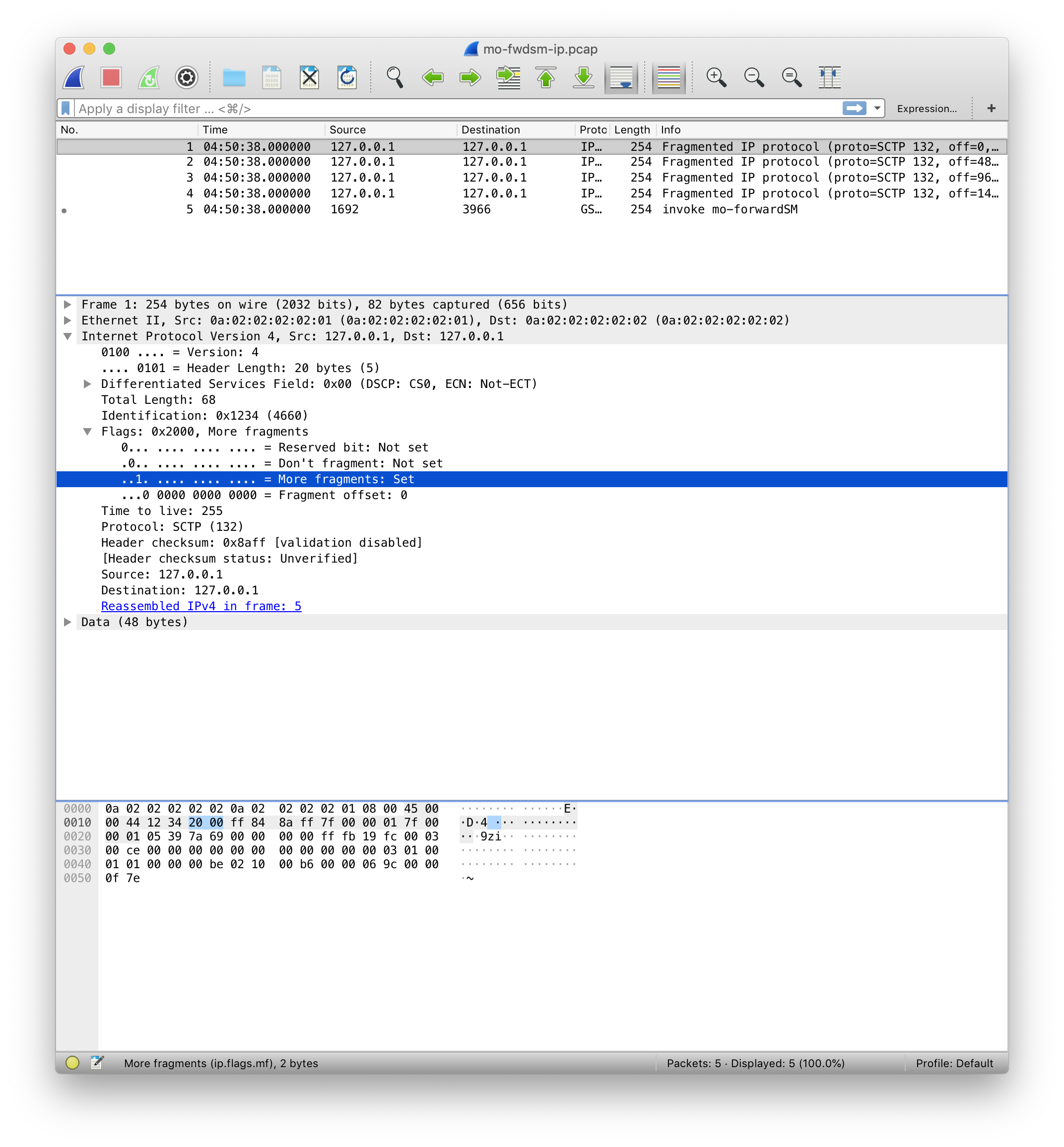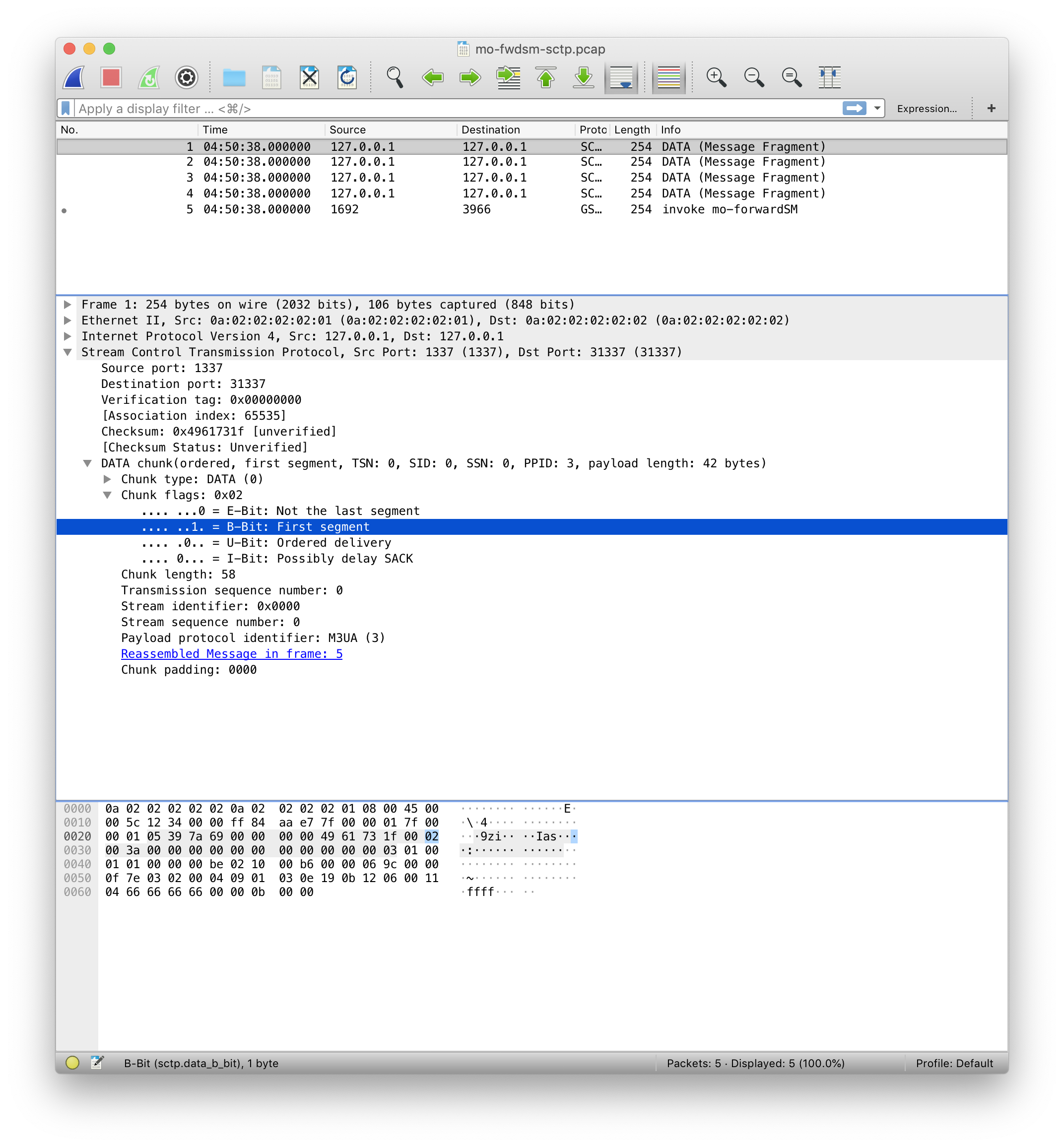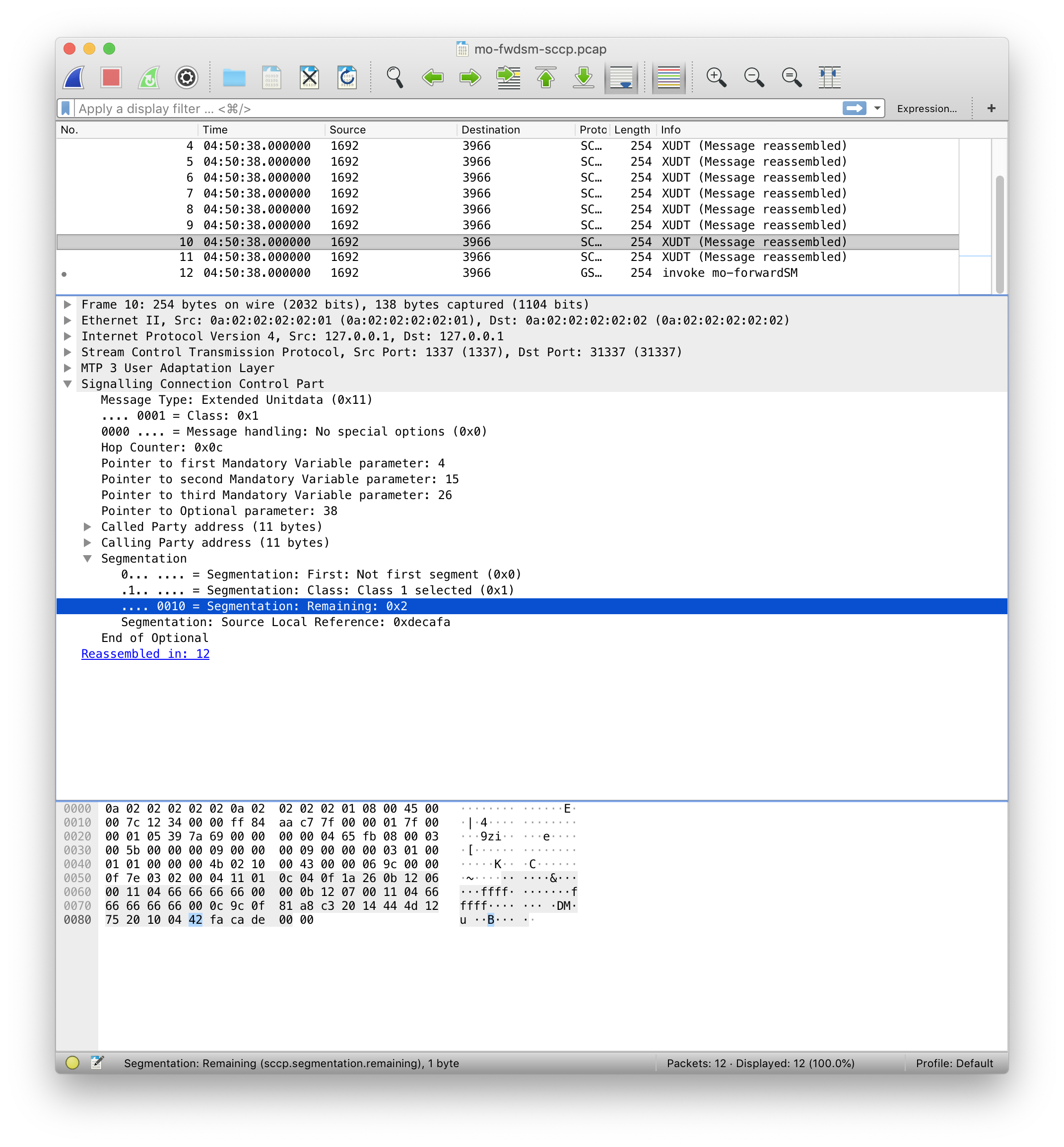ss7-fragz: Fragging SS7 for fun and profit
SS7 is nowadays transported over SIGTRAN. The SIGTRAN stack relies on IP and SCTP. Above the adaptation layer - M2UA, M2PA, M3UA -, the rest of the legacy SS7 stack is kept intact: SCCP implements the transport layer of applicative messages, TCAP/MAP and TCAP/CAP for example.
Fragmentation and segmentation may happen at three levels, and three tools are provided to split a SIGTRAN packet in multiple pieces, assessing the reassembly capabilities of a given equipment.
The packet we will use to illustrate the way we cut is depicted below:
Three tools are provided to assess reassembly abilities at various levels - IPv4, SCTP and SCCP:
IPv4 fragmentation
Scapy provides fragment function that yields IP fragments. Keyword fragsize controls the size of the fragments. Two fields of the IPv4 header are of interest here:
More fragmentsbit indicates whether this fragment is the last or notFragment offsetis 13 bits long and indicates the offset of this fragment in the overlong packet
Note that the initial payload invoke mo-forwardSM is correctly decoded, as a compliant equipment would do.
SCTP segmentation
Scapy also provides us with SCTP mangling capabilities. SCTPChunkData allows us to play with the fields involved in SCTP segmentation:
E-bitindicates if this segment is the last oneB-bitindicates if this segment is the first one of a sequenceTransmission sequence numberallows to reorder segments prior to reassembly
Note that the initial payload invoke mo-forwardSM is correctly decoded, as a compliant equipment would do.
SCCP segmentation
Now Scapy does not help us: generally speaking SS7 protocols support in Scapy is poor. A minimal embryonic implementation of M3UA/SCCP allows us to produce XUDT segments. The fiels involved are contained in the Segmentation element of information:
Firstbit indicates if this segment is the firstRemainingis 4 bits long and indicates the number of remaining segments. Thus a zero indicates the last segment, and segments may be ordered with respect to the remaining value
Note that the initial payload invoke mo-forwardSM is correctly decoded, as a compliant equipment would do.
references
For the curious reader, a non-exhaustive list of references:



